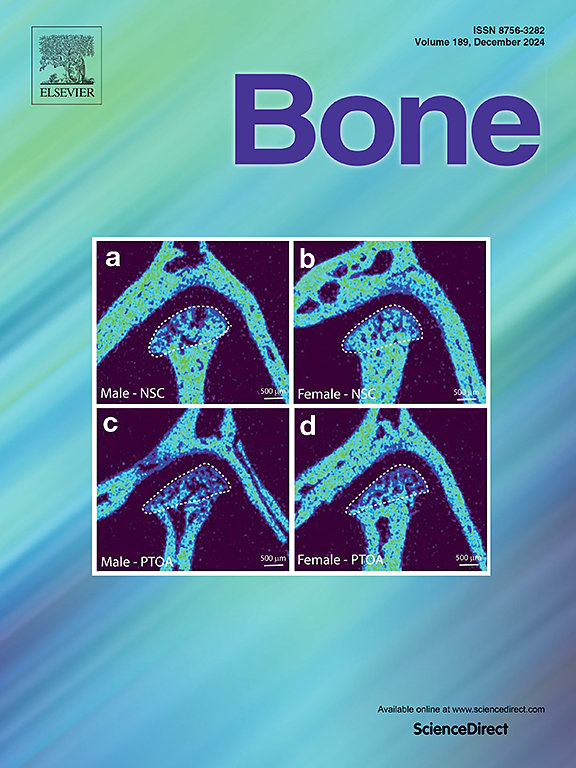Deficiency of EXT1 and FGFR3 genes promotes chondrocyte differentiation, leading to the induction of osteochondroma formation
IF 3.5
2区 医学
Q2 ENDOCRINOLOGY & METABOLISM
引用次数: 0
Abstract
Objective
This study aims to investigate the roles of the EXT1 and FGFR3 genes in the development of osteochondromas, focusing specifically on their potential interactions in chondrocyte proliferation, differentiation, and tumor formation.
Methods
In vitro, the ATDC5 chondroprogenitor cell line was used to examine the effects of inactivation of both EXT1 and FGFR3. In vivo, a mouse model with dual gene knockout of Ext1 and Fgfr3 was constructed to further explore these genes' roles in tumor formation by observing the incidence and distribution patterns of osteochondromas.
Results
The in vitro experiments demonstrated that ATDC5 cells with reduced expression of EXT1 and FGFR3 genes exhibited enhanced chondrogenic differentiation. In vivo, Fgfr3+/−;Ext1+/− mice showed a significant incidence of osteochondromas (72.7 %), primarily located in the humerus, fibula, and tibia, while mice with a single heterozygous deletion did not display notable lesions.
Conclusion
The EXT1 and FGFR3 genes play crucial regulatory roles in the development of osteochondromas. Deficiencies in Ext1 and Fgfr3 can induce the formation of osteochondromas.
缺乏EXT1和FGFR3基因可促进软骨细胞分化,导致骨软骨瘤的形成。
目的:本研究旨在探讨EXT1和FGFR3基因在骨软骨瘤发生中的作用,特别关注它们在软骨细胞增殖、分化和肿瘤形成中的潜在相互作用。方法:在体外,使用ATDC5软骨祖细胞系来检测EXT1和FGFR3失活的影响。在体内,我们构建了Ext1和Fgfr3双基因敲除的小鼠模型,通过观察骨软骨瘤的发病率和分布规律,进一步探索这些基因在肿瘤形成中的作用。结果:体外实验表明,EXT1和FGFR3基因表达降低的ATDC5细胞表现出增强的软骨分化。在体内,Fgfr3+/-;Ext1+/-小鼠表现出显著的骨软骨瘤发生率(72.7 %),主要位于肱骨、腓骨和胫骨,而具有单一杂合缺失的小鼠没有表现出显著的病变。结论:EXT1和FGFR3基因在骨软骨瘤的发生发展中起着重要的调控作用。缺乏Ext1和Fgfr3可诱导骨软骨瘤的形成。
本文章由计算机程序翻译,如有差异,请以英文原文为准。
求助全文
约1分钟内获得全文
求助全文
来源期刊

Bone
医学-内分泌学与代谢
CiteScore
8.90
自引率
4.90%
发文量
264
审稿时长
30 days
期刊介绍:
BONE is an interdisciplinary forum for the rapid publication of original articles and reviews on basic, translational, and clinical aspects of bone and mineral metabolism. The Journal also encourages submissions related to interactions of bone with other organ systems, including cartilage, endocrine, muscle, fat, neural, vascular, gastrointestinal, hematopoietic, and immune systems. Particular attention is placed on the application of experimental studies to clinical practice.
 求助内容:
求助内容: 应助结果提醒方式:
应助结果提醒方式:


